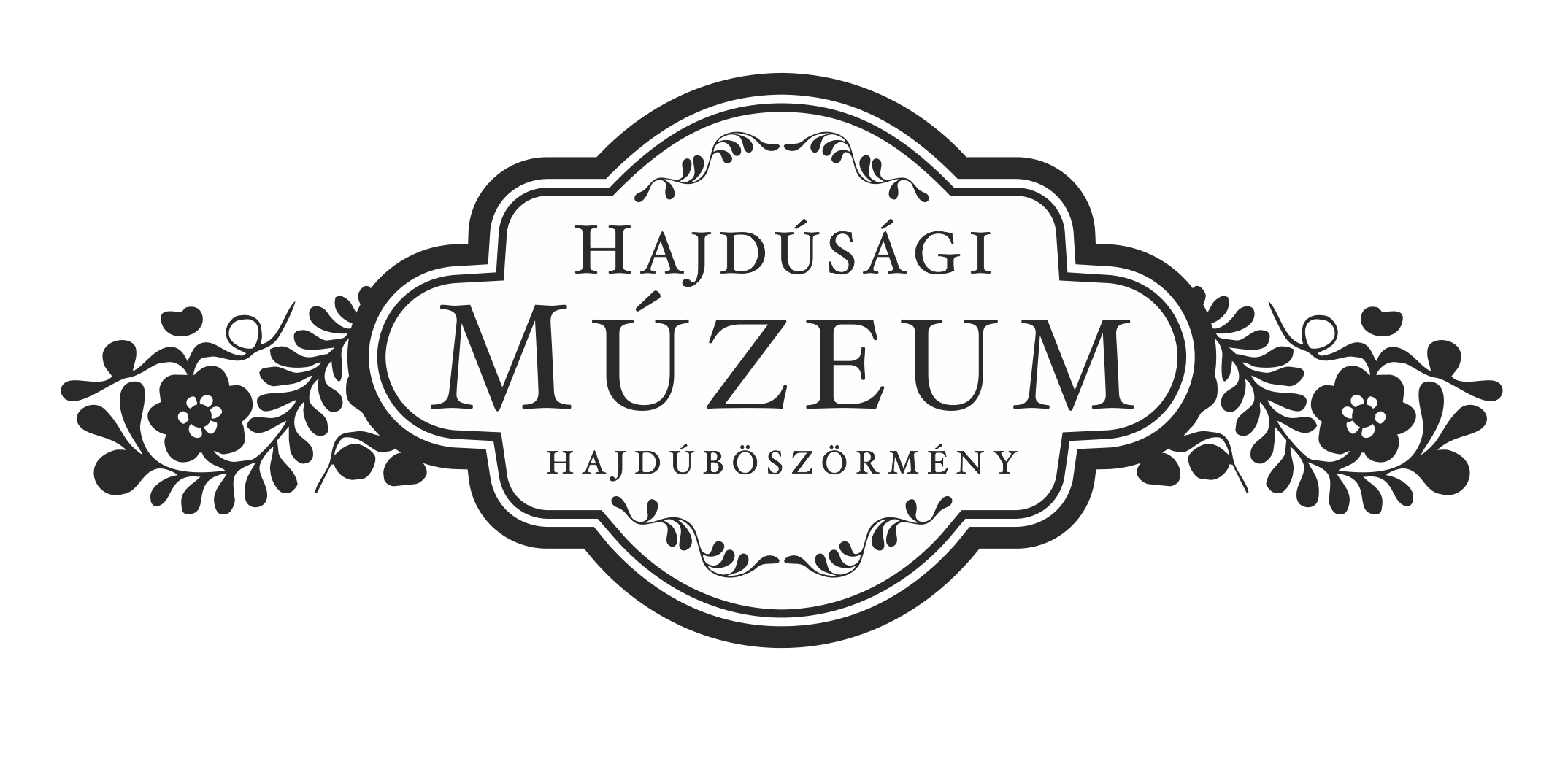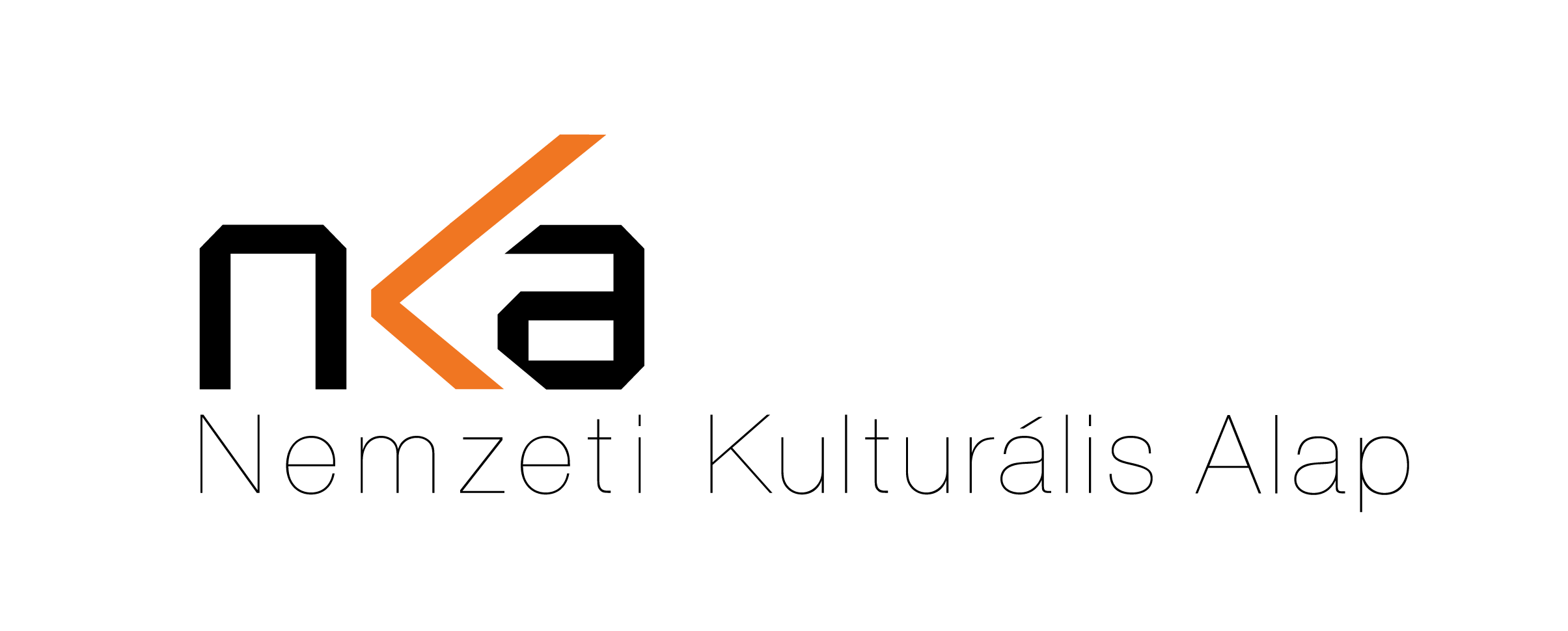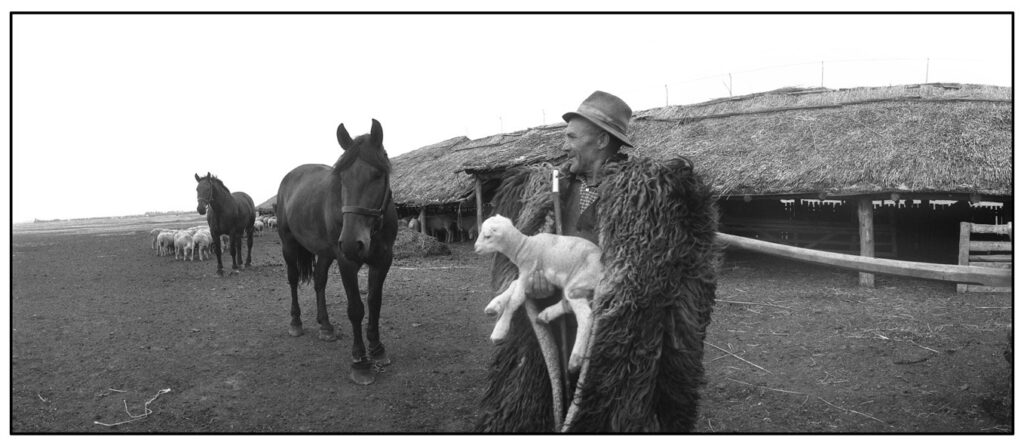
When it comes to faithfully capturing reality, documentary photography is considered the closest form of imaging. However, Miklós Szabó was more than a passive observer of the given moment, with his individual intuitions and simple solutions, through his photographs he asks us to get to know Hajdúság, to take a closer look at what was closest to him: the people and the landscape in which he lived.
With his humanistic approach to reportage and documentary photography, he always made the people he depicted and their life situations dignified. He knew and was interested in the topic, and many times he has got friendships with the characters.
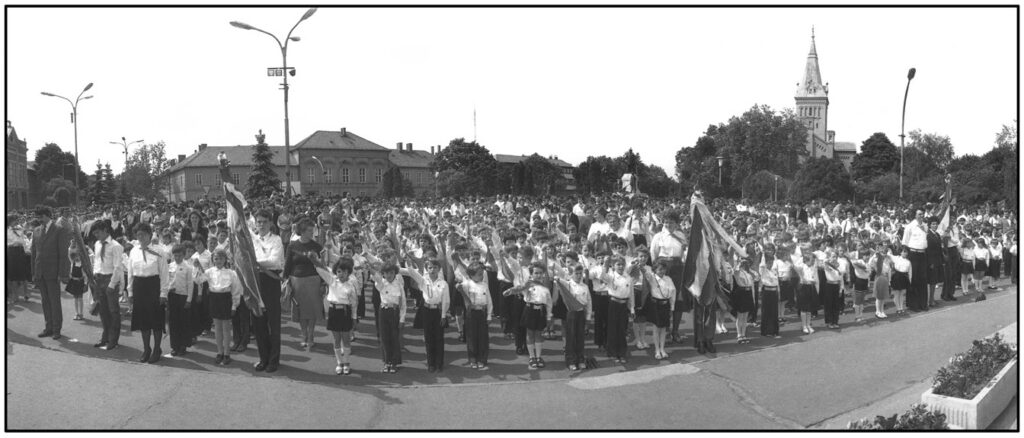
He used the Horizon camera its field of vision is beyond the realm of human vision. It captures the subject in a way that no other camera can, and perspective often allows the image to tell more than a single story, involving us and breaking down the barrier between the viewer and the image.

Miklós Szabó's work was characterized by varied themes, so while making the panoramic shots presented here, he took advantage of the opportunities offered by the format, be it reportage, documentary or artistic imaging.
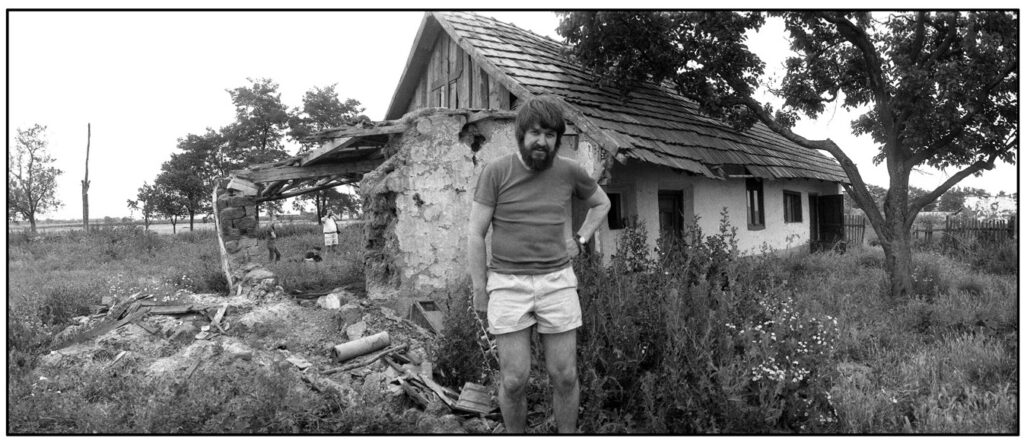
The photos he wants to present isn’t enough formal compositions and isn’t fleeting snapshots, but patient pictures of everyday life. Photography is not only about what appears in the picture, but also about what is not shown. With this camera, it's hard to rule it out; because the lens sees so much, it portrays the scene more honestly. The people in his photos often don't even know they're in the picture. This is a different working method, and need a different perspective, thanks to the opportunity provided by the format, we can feel ourselves in the infinite and timeless present.
Miklós Szabó-our photographer of our newspaper- his exhibition of about thirty photos travels throughtout the spring in the factories, institutions and producer cooperatives of Hajdúböszörmény and Hajdúnánás. The thematic material is an uniform selectioen, he’s talks about the human from Hajdúság, the peasant life half-past, the decaying-transitive farm lifestyle. The language of the photo also testifies to that connection, it connects our present to the past, ties it to the ground our life and work. The devices, tools, and objects appearing in the pictures are in themselves eloquent expressions of the past, just like the discarded boots, the dilapidated barn, and the grass covering unused objects.
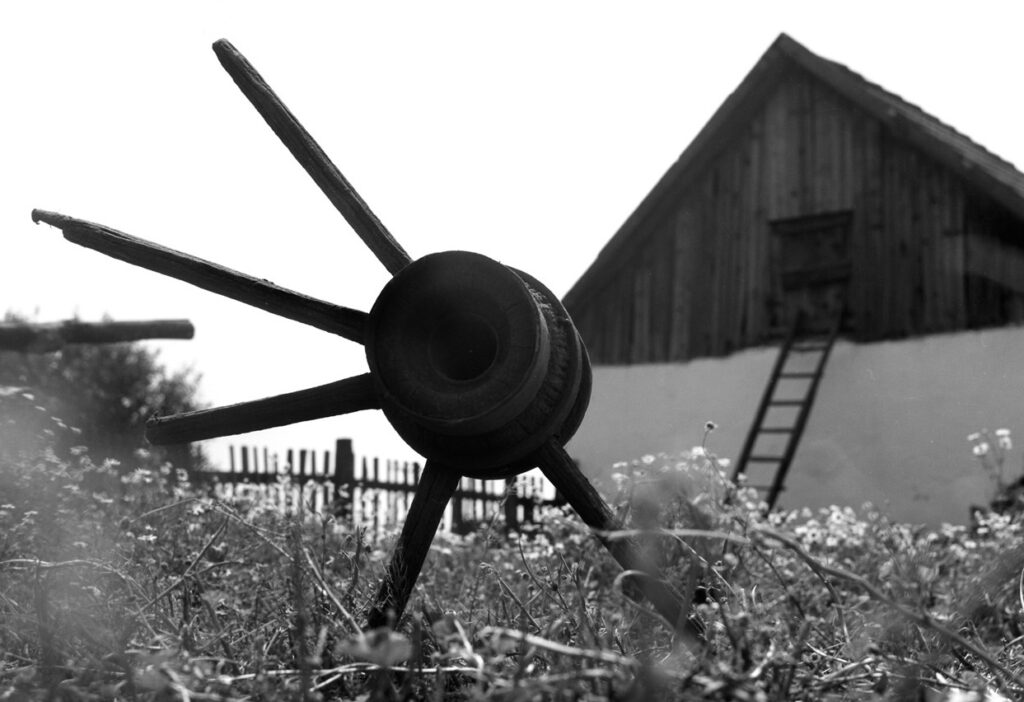
Miklós Szabó contemporary to the photography devices, communicates things in his language, grab moments, feelings to the human – objective – natural world the traces of wich it still lives today, and wich two or three decades earlier had been decisive in our lives. But each piece of the material world of the peasant everyday life can be a symbol of an era beyond itself. A berena that can be pulled by animal power, a seeder with a thin tread, a rarely used cylinder, a rusted ploughshare speaks of this world. As a well-crafted hand shaped for a tool, a narrow look expressing aloofness, a typical work gesture testify to the same. The photos of this exhibition bring a small slice of the surrounding and passing world: the old peasant way of life, the world of the farm dwellers, in such a way that we can feel it: that field salsify, yarrow, thistle, a field flower, a passing way of life painful-beautiful, con - refers to his hard, never-returning world.
Miklós Szabó’s artistic works are at the same time authentic and convincing documents of the town’s history, preserving some of the characteristics, elements and motifs of the lifeof the Hajdúság peasant.
Lázár Imre
Hajdúböszörményi Termelőszövetkezetek Lapja 1978. április 19.
”These photos document the age and personal history at the same time: creations of artistic value, conserving and authenticating past and present, serving as the foundation of the future.” this is how Imre Lázár, former mayor of the town, praised Miklós Szabó’s works. The exhibition of the photographer, ”My town, Hajdúböszörmény” opened on the 80th anniversary of his birth.
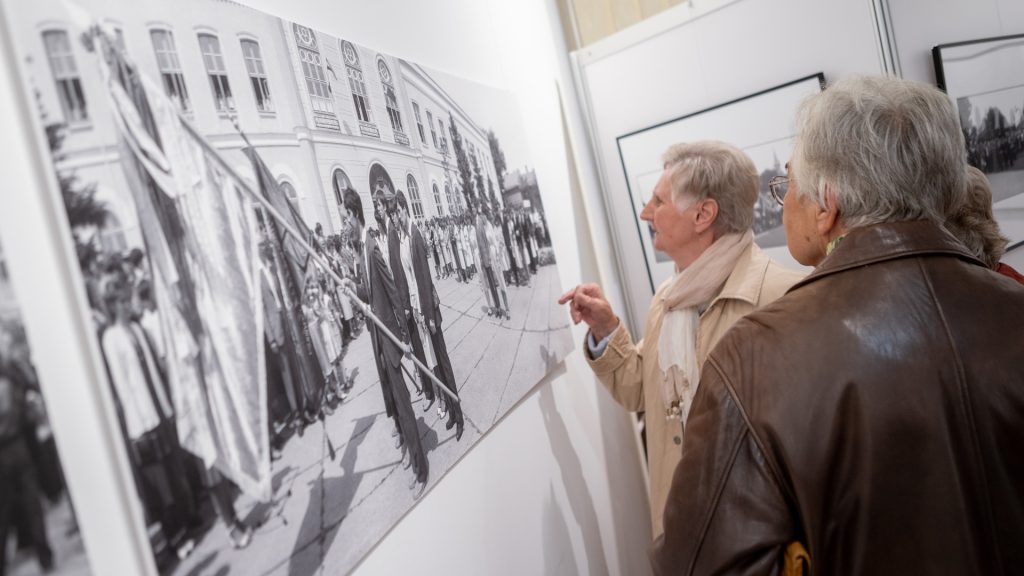
The opening ceremony was held on 27th October in Hajdúsági Gallery. For this occasion, a catalogue of identical title was published with some impressive introductory thoughts: ”When it comes to representational art, documentary photography is considered the most important art form to image reality. Miklós Szabó, however, was more than a passive observer of the recorded moment. His intuitive and straightforward technique invites the viewer to discover the people and the landscape of Hajdúság, to have a closer look at the most precious things in the photographer’s life”. At the event, Ildikó H. Fehér, editor reporter, highlighted that the exhibition was brought to life by the initiative of Hajdúsági Museum with the contribution of Szabadhajdú Public Benefit Nonprofit Ltd, the Municipality and the family of the photographer. The aim of this collaboration is to maintain and publish Miklós Szabó’s photo material, preserving and presenting his works, spirit and legacy. The introductory speech was followed by the performance of Sarolta Kapusi, teacher of the Music School, and Eszter Kiss. Imre Bertalan, executive director of Szabadhajdú Public Benefit Nonprofit Ltd., welcomed the audience and expressed his approbation for the intention and support of the Municipality to record and archive the major occasions, events of the Town in an appropriate way and hand these values over to future generations. Collaboration started in the beginning of last year and we can admire this wonderful collection as a result of the hard work. Director celebrated the contribution of Miklós Szabó’s family, the Municipality of Hajdúböszörmény and the representatives of Hajdúsági Museum with special praise to artist photographer, Tamás Horváth. Klára Lelesziné Sveda, deputy chair of the Educational and Cultural Committee, continued with some words about the life and career of Miklós Szabó. She mentioned that arriving as third child to the family, he received loving care and tenderness from his parents, as he became their only child after the early death of his siblings. His father, Zoltán Szabó was a prestigious merchant in Hajdúböszörmény, following the nationalization, he continued as a cashier at the municipal legal office. His mother managed the household whole-heartedly. He graduated at Teacher Training College in Eger and worked at Bethlen Gábor Primary School for 40 years as teacher and later deputy headmaster. His affection and passion for photography developed during the secondary school years. Klára Leleszné Sveda also talked about an important milestone in his private life, his marriage with his colleague Júlia Nagy at Christmas time in 1969, who became his trustworthy companion throughout the 26 years they spent together. They had two children whom they raised with loving care.
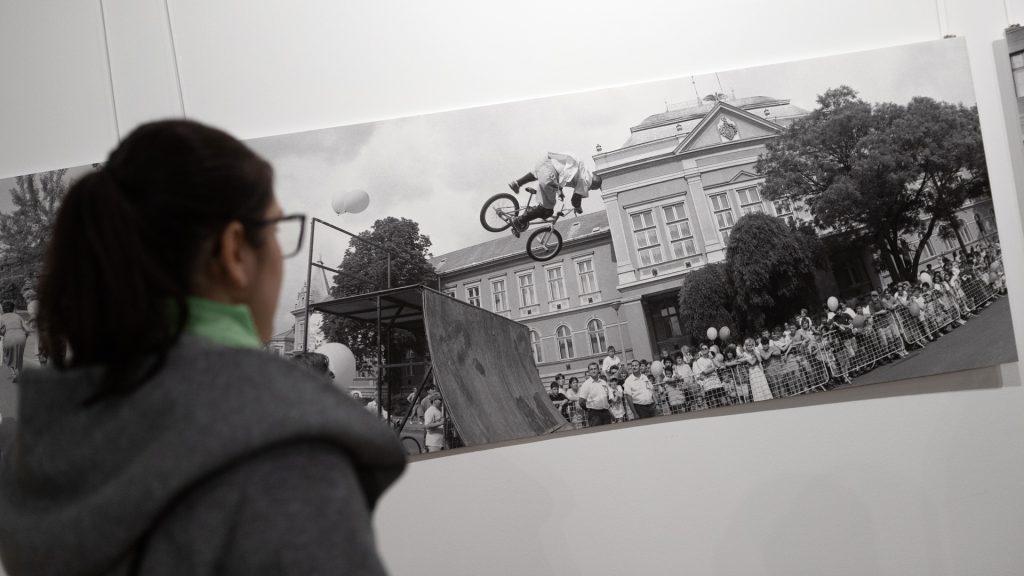
People of Hajdúböszörmény often refer to Miklós Szabó as the photographer of the town . He took up this profession in 1960 and was appointed municipal photographer between 1966 and 2006. ”Sharp eyes and heart make a good photographer” – he used to say. He attended different occasions of the town, taking tens of thousands of photos and documenting the history of the town throughout four decades. He was a chronicler who recorded the events, as well as scientists, politicians, artists coming to our town. During the past decades he became the photographer of the Town’s weekly newspaper, and he prepared photos used for the Photo News. Deputy chair added that Miklós Szabó always had plans and goals that kept him up and doing. He left us a considerable legacy and our obligation is preserving and sharing it with the wide public. At the end of the opening ceremony, Miklós Szabó, the photographer’s son thanked all the contributors who facilitated the organisation of the exhibition. He drew attention to the outstanding work of Tamás Horváth artist photographer and handed over his father’s analogue camera as a recognition. ”Miklós Szabó bequeathed a huge legacy to the residents of this town, we can keep decades of history in our hands and our ’only’ duty is to preserve them” said Imre Gargya, his former colleague. The collection can be visited until January 5th at Hajdúsági Gallery, Culture Centre.
Erzsébet Bertalan
Hajdúsági Museum
cordially invites you, your family and friends
to the opening ceremony of Photo Exhibition
SZABÓ MIKLÓS
MY TOWN, HAJDÚBÖSZÖRMÉNY
Thursday, October 27, 2022 5:00PM

celebrating the 80th ANNIVERSARY OF SZABÓ MIKLÓS’S BIRTH.
Imre Bertalan
executive director of Szabadhajdú Public Benefit Nonprofit Ltd.
welcomes guests.
Attila Kiss
mayor of Hajdúböszörmény
opens the exhibition.
Performance of Bartók Béla Primary Music School of Hajdúböszörmény.
Exhibition can be visited until January 5, 2023 at Hajdúság Gallery, Sillye Gábor Culture
Centre, 4 Bocskai István Sq.
